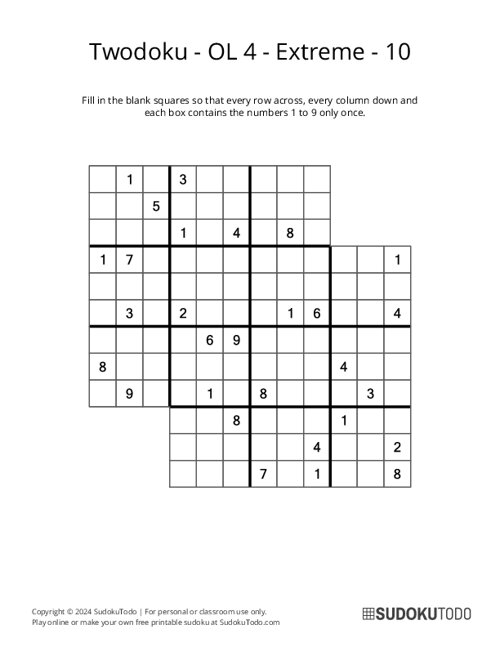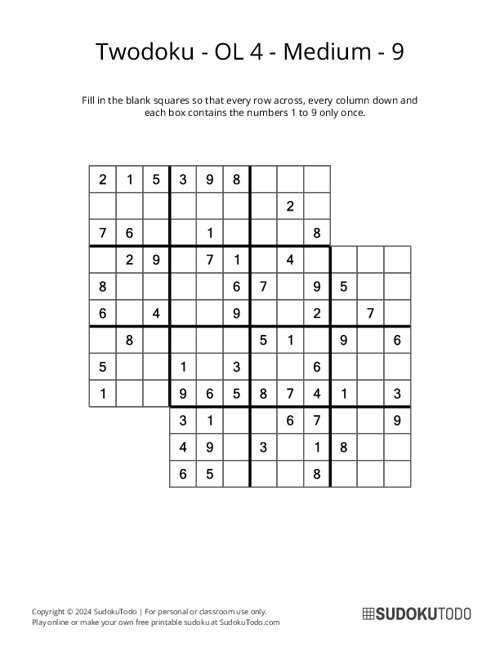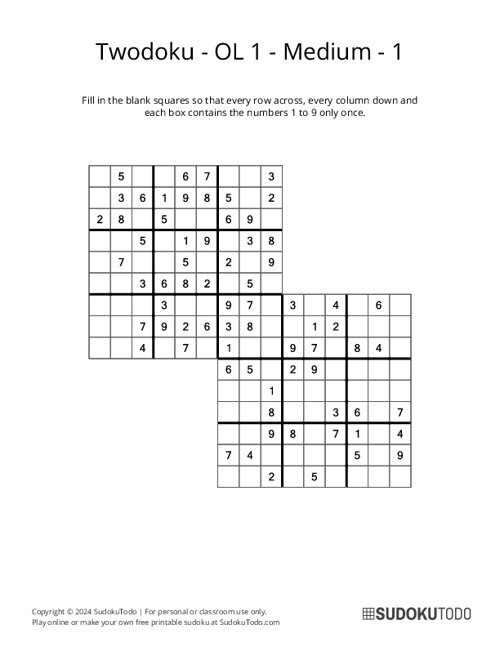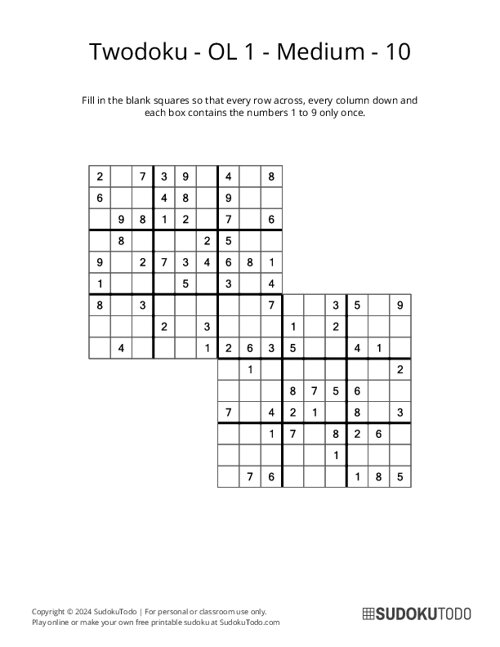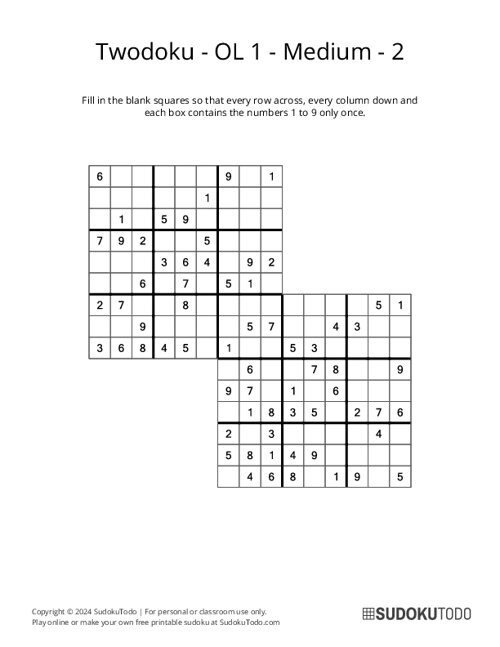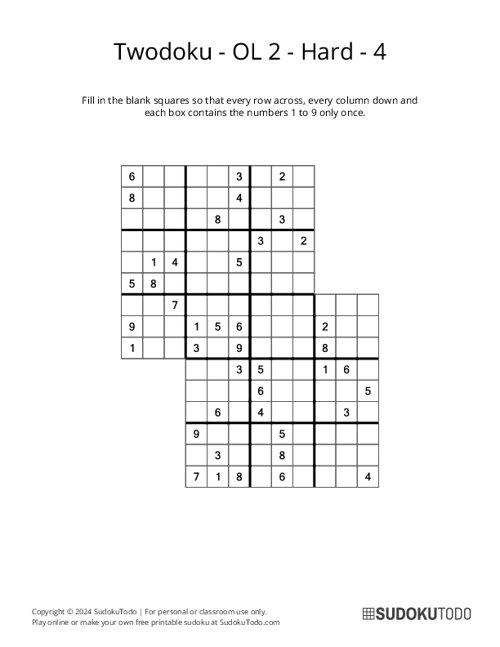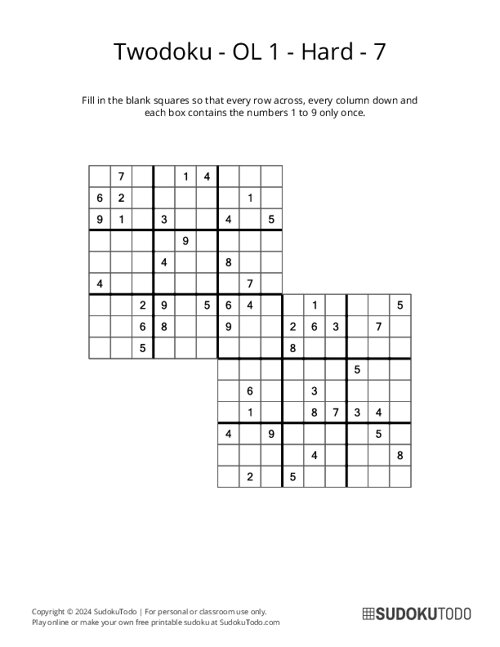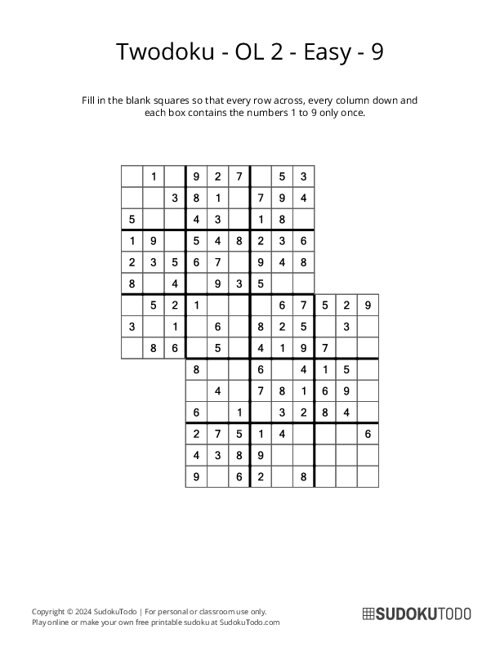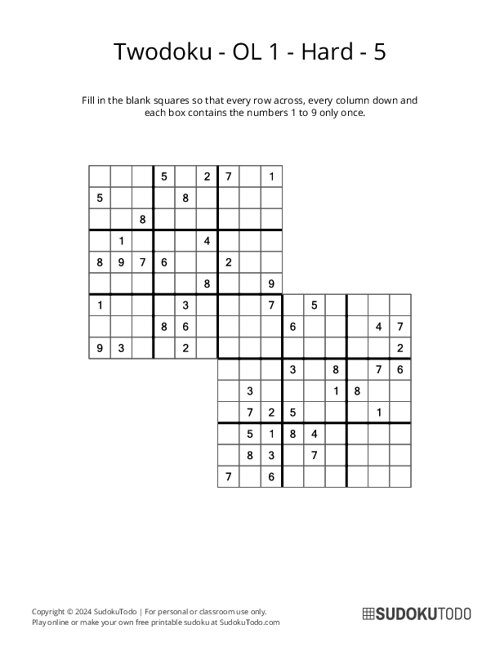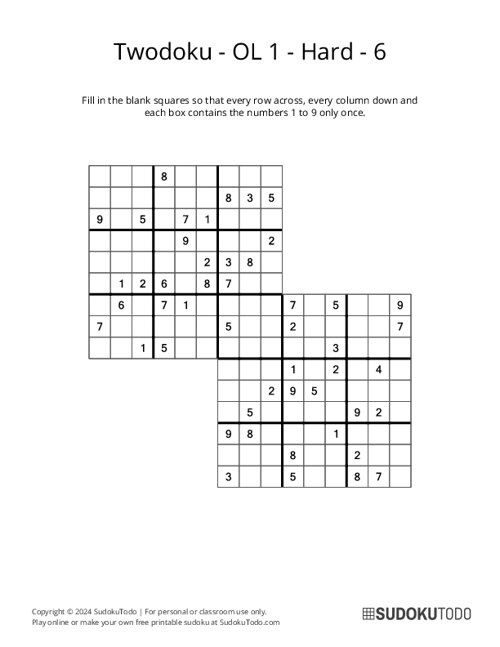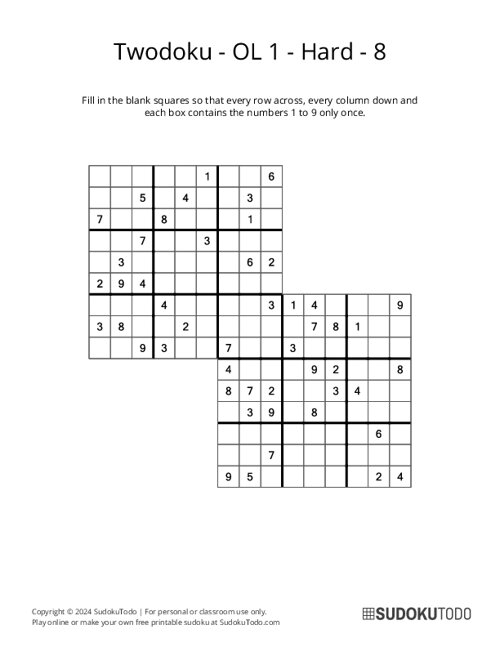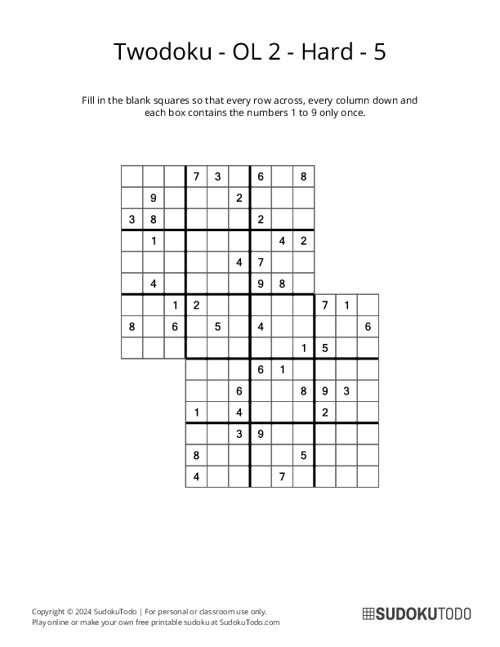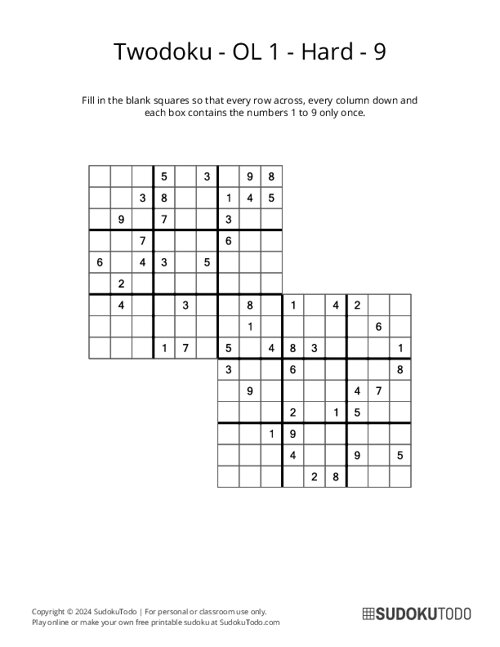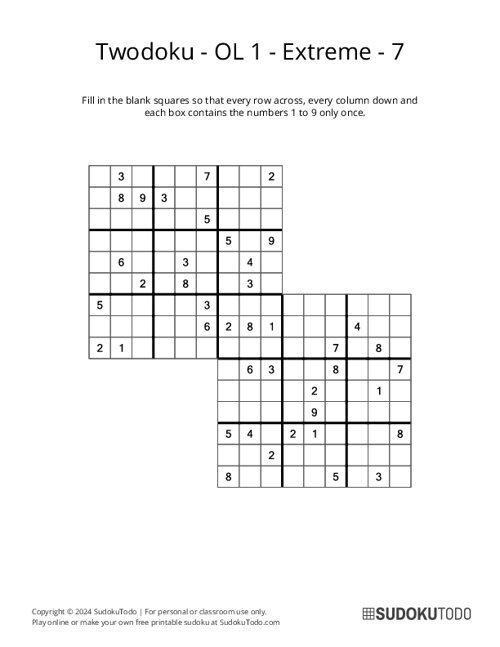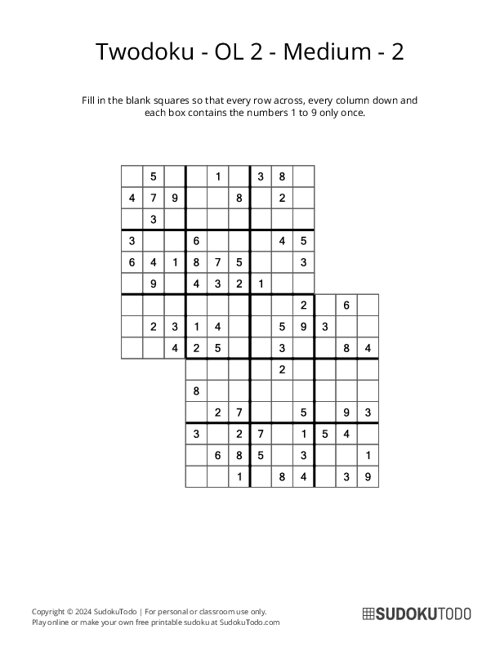Printable Sudoku
- Alphabet
- Battleships
- Binary
- Bridges / Hashi
- Chain Sudoku
- Consecutive
- Cross Sudoku
- Flower Sudoku
- Frame Sudoku
- Futoshiki
- Galaxies
- Greater Than
- Hitori
- Jigsaw Sudoku
- Kakuro
- KenKen
- Killer Sudoku
- Kropki Sudoku
- Little Killer
- Magic Squares
- Nonogram
- Odd Even Sudoku
- Outside Sudoku
- Rossini Sudoku
- Samurai Sudoku
- Sandwich
- Skyscraper
- Slitherlink
- Sohei Sudoku
- Star Battle
- Sudoku
- Sudoku for Kids
- Sudoku Mine
- Sudoku XV
- Sujiken
- Tripledoku
- Tripod Sudoku
- Twodoku
- Vudoku
- Windmill
Special Variations
Play / Solve
- Home»
- Twodoku
Twodoku / Double Sudoku Puzzles
Download and enjoy Twodoku (Double Sudoku) puzzles with our printable collection. Improve your thinking with these tricky number puzzles. Perfect for all ages and skill levels. Print now and start solving.
Showing 1-15 of 120 records
Sort by:
Twodoku - Four - Extreme - 10
Twodoku - Four - Medium - 9
Twodoku - One - Medium - 1
Twodoku - One - Medium - 10
Twodoku - One - Medium - 2
Twodoku - Two - Hard - 4
Twodoku - One - Hard - 7
Twodoku - Two - Easy - 9
Twodoku - One - Hard - 5
Twodoku - One - Hard - 6
Twodoku - One - Hard - 8
Twodoku - Two - Hard - 5
Twodoku - One - Hard - 9
Twodoku - One - Extreme - 7
Twodoku - Two - Medium - 2
About Twodoku Puzzles
Twodoku, also known as Double Sudoku, is a version of the classic Sudoku puzzle that uses two grids. These grids are placed next to each other or on top of each other. The two grids share a middle square, which is a 3x3 square that belongs to both grids. In Twodoku puzzles, players need to solve both grids at the same time, following the usual Sudoku rules, while also considering areas where the grids overlap.
Basic Rules / How to Play
- Two Grids: The puzzle consists of two 9x9 Sudoku grids that partially overlap.
- Numbers Placement: Each row, column, and 3x3 sub-grid (box) must contain all digits from 1 to 9 without repetition.
- Overlapping Region: The area where the two grids overlap (usually the middle 3x3 part) must follow the rules of both grids at the same time.
Solving Tips and Techniques:
Solving a Twodoku puzzle means using regular Sudoku methods along with special strategies to deal with how the two grids work together. Here are some helpful techniques:
- Shared Region: Start by looking at the areas where the grids overlap. The numbers in these areas affect both grids. Make sure that the numbers in one grid also follow the rules of the other grid.
- Cross-Referencing: Use the rules of one grid to reduce the options in the overlapping area of the other grid. Think of the shared areas as a connection between the grids. Use clues from one grid to rule out options in the other.
- Unique Candidates: If a number can only appear in one specific cell within the overlapping region to satisfy both grids, place it there.
- Guessing: If you get stuck, try to guess a number for the overlapping area. If the guess causes problems, go back and try a different option.
- Pencil Marks: Fill in possible numbers in the empty cells to reduce the choices. This makes it easier to find the right solution for different options.
Twodoku puzzles can be tough, especially when they get harder. The trick is to look closely at how the two grids interact and use logic to figure out where things go.
